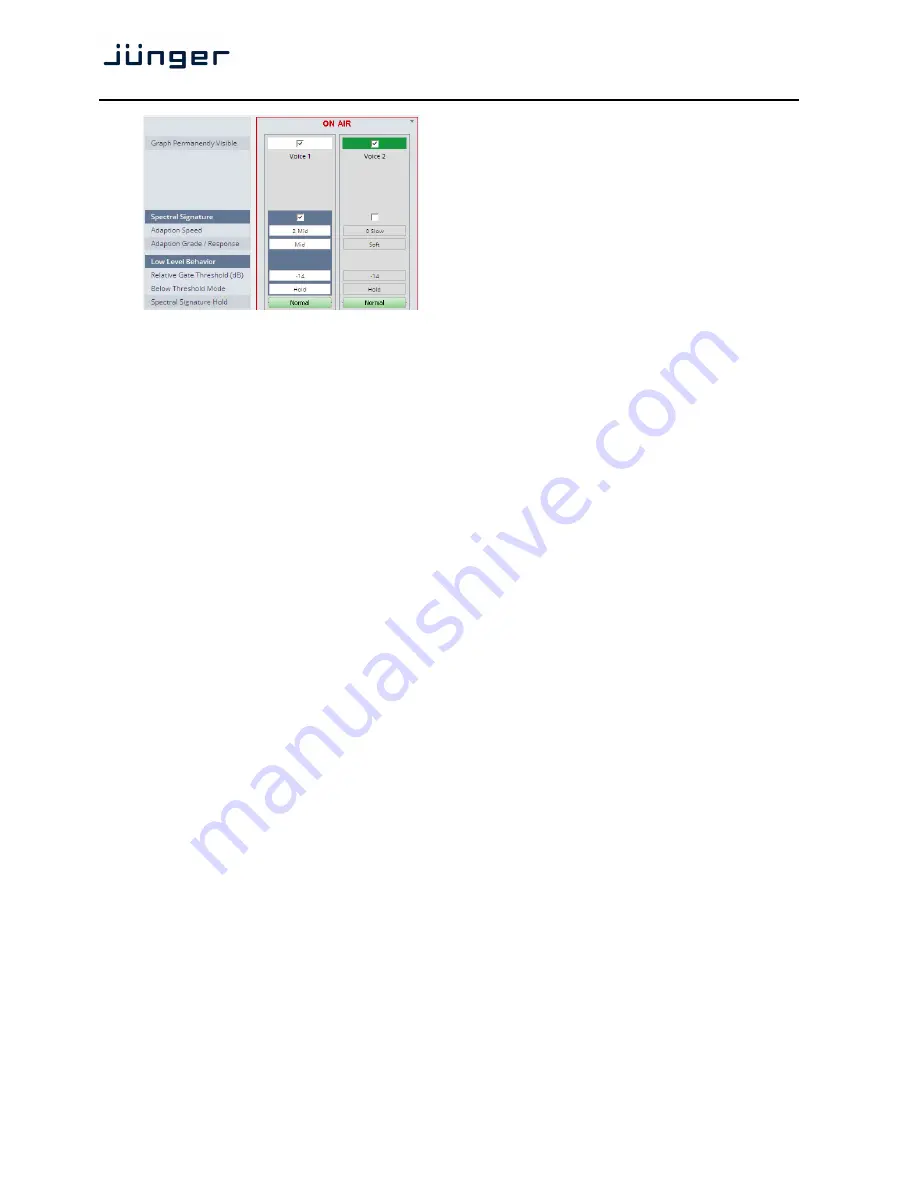
D*AP4 VAP
50
Graph Permanently
[ON / OFF]
Visible
The color code of the column
headers will change
depending on the voice
channel selected for display
(see upper display).
White color represents the
selected voice channel
(Voice 1 for example) while
the other channel shows dark
green.
Spectral Signature
[ON / OFF]
Adaption Speed
[0 / 2 Mid / 3 / 4 Fast]
This parameter affects the time taken for the bands to reach their target
values. Fast settings even out differences between sources, but can
lead to audible transitions. They are well suited for single channel
signals, for example to even out sound differences due to movement in
front of a microphone. Slower settings remain unobtrusive, but cannot
bring down differences very quickly. They are suitable for mixed content
or buses with varying content. The overall spectrum remains well
balanced without drastic sonic changes.
Adaption Grade /
[Soft / Mid / Hard]
Response
In order to achieve a stable and natural behavior, the intensity of the
gain change needs to process according to a response curve. This
curve is defined by a ratio. A high ratio means that a difference of 5dB
results in a gain change of almost the same amount. A low ratio means
that the actual gain applied is lower. A ratio of 2:1 would bring the
amplification up to 2.5dB in this example. The max gain value is applied
after the ratio calculation. As these ratios are not static, they have been
combined into three preset responses. The average ratio increases from
'soft' to 'hard'.
Low Level Behavior
Relative Gate
[-10 …. -14 … -20 / OFF]
Threshold (dB)
To prevent a band from amplifying noise (especially hum), a relative
gate can be set. If the energy within one band is lower than this gate, no
amplification will take place. This is especially useful, when mixed
content with highly varying frequency response is processed (for
example a radio station output with alternating presenter voice and
music).
Below Threshold Mode
[Release / Hold]
In continuous operation the 'Below Threshold Mode' should remain in
'release'. In this case the dynamic gain slowly returns to its neutral state
in case of signal absence. In this mode a returning signal would start a
new processing period with its lead in attack time. This can be
undesired, especially in production applications where transport
operations introduce unnatural gaps. In those cases setting the 'Below
Threshold Mode' to 'hold' will pause the dynamic processing at the last
value until the signal returns. Returning signals are treated just like
continuous signals. This function has some similarities to the 'Freeze
Level' but works with a different designation as it is meant to keep
processing fluent over signal loss.
















































